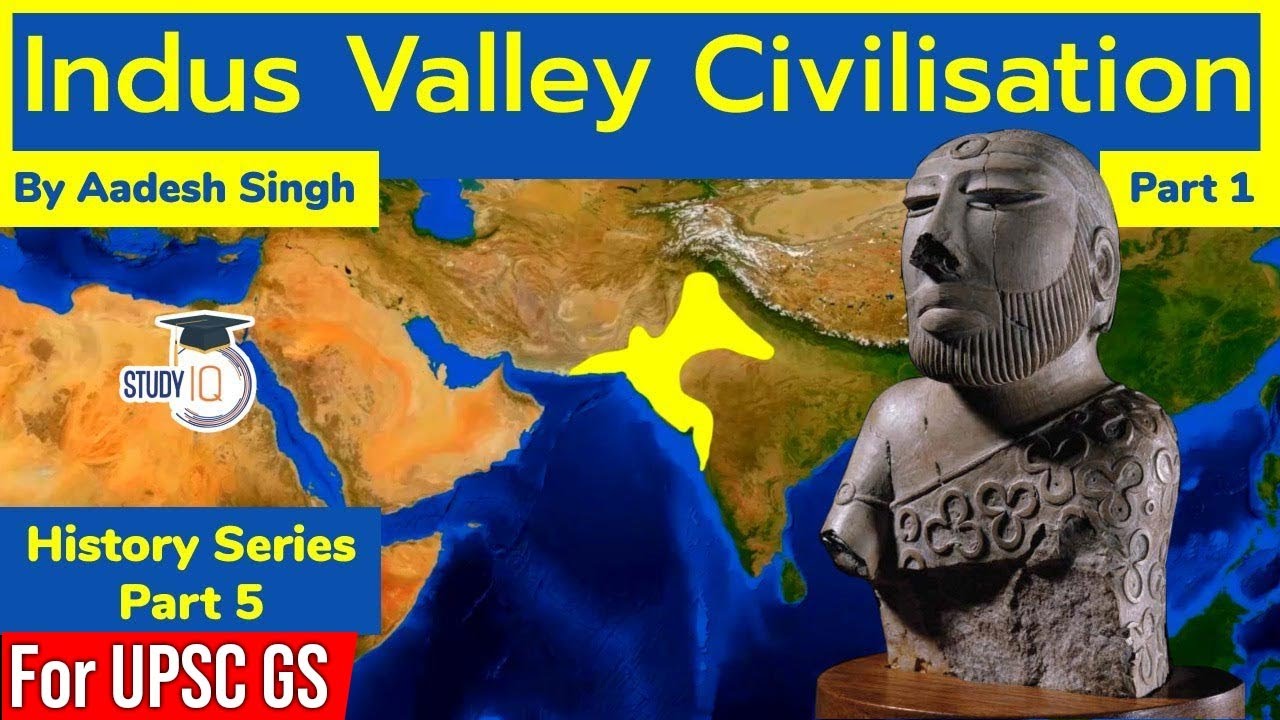Rise and Fall of Indus Valley Civilization
Summary
TLDRThe Indus Valley Civilization, one of the world's earliest, thrived around 3000 BC in what is now western India and Pakistan. Known for its advanced urban planning, the civilization featured cities like Harappa and Mohenjo-Daro with sophisticated sanitation and water systems. Despite the absence of deciphered written records, archaeological evidence suggests a culture possibly honoring nature and engaged in extensive trade, including cotton and jewelry. The civilization's decline is hypothesized to be due to climate change or tectonic shifts, leading to a gradual abandonment of cities by 1500 BC.
Takeaways
- 🌟 The Indus Valley Civilization was one of the earliest documented civilizations, thriving around 3000 BC in what is now western India and Pakistan.
- 🛣️ The civilization's growth was significantly influenced by its location along the Indus River, which provided a reliable water supply, fertile soil for agriculture, and a natural transport system.
- 🏙️ Urban centers like Harappa and Mohenjo-Daro showcased advanced city planning, with straight roads, elaborate drainage systems, and durable brick buildings.
- 🚽 The civilization had an advanced water supply and sanitation system, including private toilets connected to public drains, indicating a focus on hygiene and public health.
- 🏰 Both Harappa and Mohenjo-Daro were fortified, likely for flood control rather than military defense, highlighting the importance of managing water resources.
- 🛁 Mohenjo-Daro featured the Great Bath, a large public facility whose purpose is debated but may have been used for religious or spiritual cleansing.
- 🌾 The civilization was sustained by agriculture, with a focus on crops like wheat and barley, and a surplus of food was stored in granaries.
- 📜 A likely writing system has been identified through seals and other artifacts, but it remains undeciphered, leaving much of the civilization's written history a mystery.
- 🔄 Trade was a significant aspect of the civilization, with evidence of a barter system and trade with regions as far as Mesopotamia, indicating a sophisticated economic network.
- 🏺 Artifacts like the Pashupati seal suggest a rich cultural and possibly religious life, with some interpretations linking it to early Hindu deities like Shiva.
- ⚔️ The civilization's decline is still debated, with theories ranging from climate change to river course alterations, but there is no evidence of warfare or invasion contributing to its fall.
Q & A
What was the geographical extent of the Indus Valley Civilisation?
-The Indus Valley Civilisation spanned the region around the Indus Valley, including areas known today as western India and Pakistan.
What factors contributed to the development and sustainability of the Indus Valley Civilisation?
-Trade, farming, peaceful coexistence, and common practices played a vital part in its development and sustainability.
How did the location of the Indus Valley Civilisation influence its growth?
-Its location along a calm, reliable water supply, such as rivers, was extremely useful for ancient civilisations, providing fresh water, areas for hunting and gathering, and fertile soil for agriculture.
What were the key features of the urban centres in the Indus Valley Civilisation?
-The urban centres had well-developed city structures, including straight roads, elaborate drainage systems, and strong durable buildings.
What was the significance of the Great Bath at Mohenjo-Daro?
-The purpose of the Great Bath at Mohenjo-Daro is not definitively known, but it is speculated to have been used for religious practices or spiritual cleansing.
What evidence is there of the Indus Valley Civilisation's trade practices?
-Artifacts such as seals, which may have been used for identification and trade, have been found, indicating trade beyond their region. They also used a barter system and had trading partners like the Sumerian States.
What is known about the spiritual beliefs of the Indus Valley Civilisation?
-While the spiritual beliefs of the Indus Valley Civilisation remain inconclusive, it is believed that they honoured nature, especially water, which has similarities with present-day Hindu beliefs.
How did the Indus Valley Civilisation manage water supply and sanitation?
-They had an advanced water supply and sanitation system with private toilets connecting to public drains, which used gravity to transport waste, and sewer networks that emptied into surrounding water courses and cesspits.
What is the significance of the Pashupati seal found in the Indus Valley Civilisation?
-The Pashupati seal is one of the most famous seals, depicting a man with a horned headdress surrounded by animals. It is often debated by archaeologists and historians, and may suggest the representation of a deity, possibly an early depiction of the Hindu god Shiva.
What theories exist regarding the decline of the Indus Valley Civilisation?
-Theories regarding the decline include climate change leading to a dry, cold climate that decreased food production, or the river changing course due to tectonic variation.
What is the current understanding of the social structure within the Indus Valley Civilisation?
-While there were districts like the citadel for the upper class and the lower town for ordinary citizens, evidence suggests relative equality among citizens, with all streets well-drained and the city remaining dry and clean.
Outlines

このセクションは有料ユーザー限定です。 アクセスするには、アップグレードをお願いします。
今すぐアップグレードMindmap

このセクションは有料ユーザー限定です。 アクセスするには、アップグレードをお願いします。
今すぐアップグレードKeywords

このセクションは有料ユーザー限定です。 アクセスするには、アップグレードをお願いします。
今すぐアップグレードHighlights

このセクションは有料ユーザー限定です。 アクセスするには、アップグレードをお願いします。
今すぐアップグレードTranscripts

このセクションは有料ユーザー限定です。 アクセスするには、アップグレードをお願いします。
今すぐアップグレード関連動画をさらに表示

Indus Valley Civilization Part 1 - Ancient India History for UPSC | Harappa Civilization

Rakyat Diutamakan! Bukan Agama & Pejabat! Semaju Apa Peradaban Indus Sebenarnya? |LearningByGoogling

Indus Valley Civilization (IVC) Geography | Complete Ancient History Through Animation | By Aadesh

Indus Valley Civilization | Early Civilizations | World History | Khan Academy

Peradaban India Kuno di Lembah Sungai Indus. Kota Mohenjodaro dan Harappa Sudah Maju Bangett!!

Sejarah Bangsa Arya dan Bangsa Dravida Peradaban India Kuno | Satyaloka
5.0 / 5 (0 votes)
